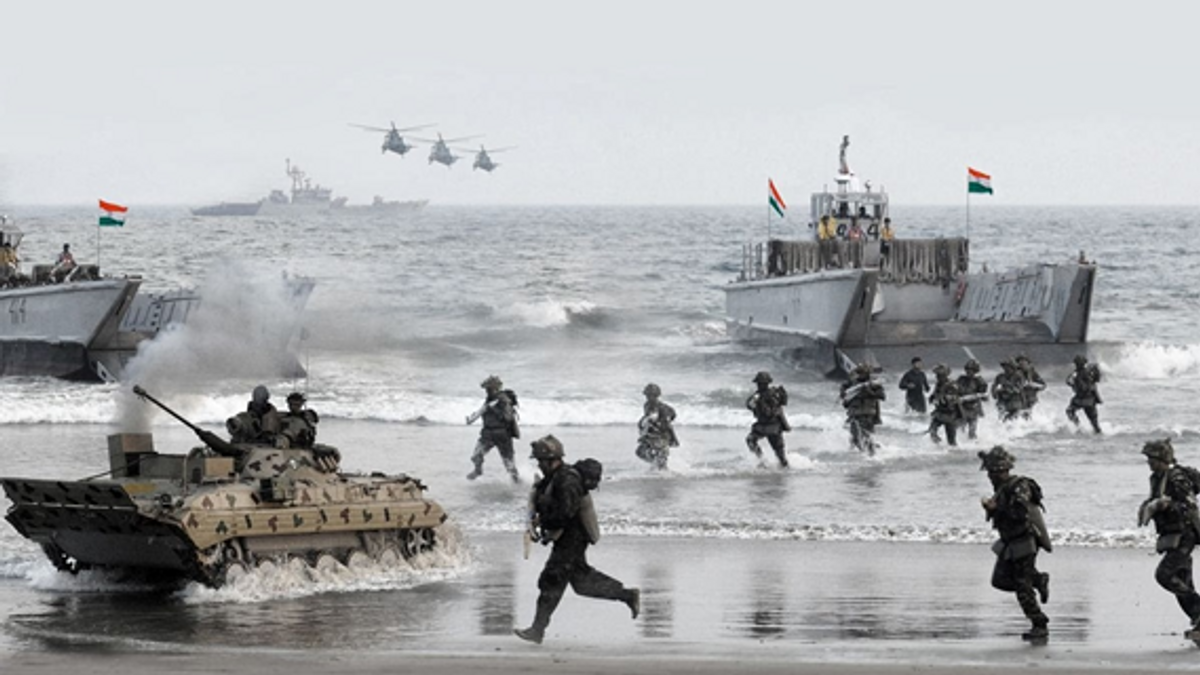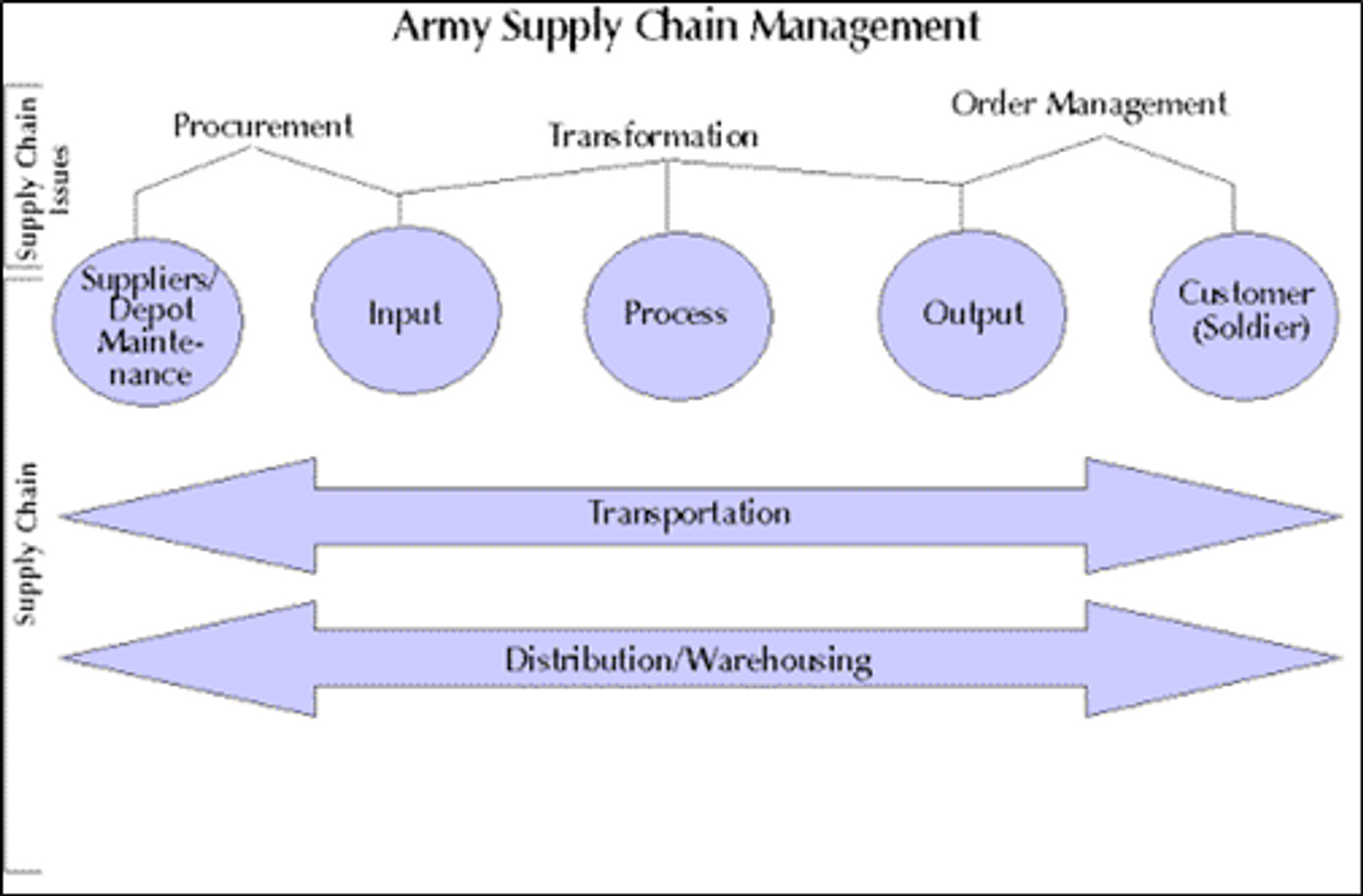
Is the Supply Chain Management Model of the Indian Army Relevant to the Present Times?
By Maj Gen R Kochhar, VSM
The Indian Army with its geographical spread across twenty nine states of the country probably has the most overstretched logistics chain amongst all armies of the world. In order for the Army to serve its objective i.e. to win a war, it needs to keep on evolving enhanced capabilities taking into account the ever growing threat and an extremely sensitive operating environment. However, the acquisition of such capabilities requires much more than just hardware.
Present Supply Chain Model of AOC
The Army Ordnance Corps (AOC) is the premier logistics organisation of the Indian Army which performs a huge role in supplying the needs of men, material and equipment for the Indian Army. It has a supply chain model which is multi echelon based with larger depots like Central Ordnance Depots and then Ordnance depots, Divisional Ordnance Units, Brigade Ordnance Units and so on. The model is interspersed with manufacturing agencies such as Ordnance Factories, Defence PSUs, DRDO and the private industry. The inventory has recently been digitalised centrally and interfaced with a robust SAP/ERP based system lending a better transparency and visibility of the entire inventory management process.
The supply chain model envisages a mix of a pull and push model, wherein the requirements of formations/units are met through a robust supply chain system comprising of land, air and rail. The military supply chain has no parallel to any commercial supply chain both in terms of scope and the criticality of the operations. The advance winter stocking of units in Leh and Ladakh as well as the recent logistic build up due to the Chinese threat are a testimony to the fact that the supply chain model has delivered and stood the test of time. The proper functioning of such support services is paramount for the soldiers at war and even small delays could result in catastrophic consequences to the security of the country.
The military supply chain can be divided into three distinct chains. The first chain encompasses fast and light stores, the second chain deals with heavy equipment and the third chain deals with the deployment and move of soldiers/men. Unlike any commercial supply chain, the Army supply chain is known to have reverse and lateral flows.
Up gradation and Modernisation
We have in recent times seen the Army Ordnance Corps undergoing a sea change in the up gradation of its processes and modernisation of its depots by the integration of computer technology and adoption of flexibility in its structure. It is doing away with unproductive practices and outsourcing them to private players in the market. The various maintenance and up gradation contracts with private players is an initiative to bring in an efficient resource management. Today the entire process from provisioning to procurement and finally to the delivery is totally automated and available to the head of the organisation for a better decision making process. It is extremely important to remain ahead of the OODA cycle in order to achieve the required objective with success. We need to give this up gradation and modernisation a further fillip to include all the 100 odd units of the Army Ordnance Corps in a phased manner.
Global Practices and Imperatives for Change
We have seen in recent times how the industry has adapted itself to employ innovative methods of cost cutting and improved efficiencies. One such measure has been to concentrate on the core activities and outsource the non-core activities.
Individual companies have ensured that their supply chains are more resilient and competitive. It is important to note that that if any one link in the supply chain is disturbed, the entire supply chain gets stalled. For example in the case for manufacture of gears; automotive production of mesh parts takes place in Pune, sub assemblies are made in Hosur and the final assembling is done at Manesar. If anyone activity is shut down at any one place, the entire supply chain gets stalled.Therefore every supply chain model will have to have a contingency plan inbuilt. Resilient capabilities will be developed in order to respond to uncertainties. Warehouses will relocate closer to customers. The private industry has adapted well to this model.
Drive India Enterprise Solutions Ltd, A TATA Group Company and a leading provider of integrated logistics solutions to a wide range of industries has over 165 warehouses connecting 7000 towns across India. These warehouses are linked and requirements met for all the towns through an integrated system of a transportation model using linear programming tools. It has also integrated third party logistics (3PL) in its functioning and services like transportation, warehousing, cross-docking, inventory management, packaging and freight forwarding are all amalgamated. According to a report, companies in India currently outsource an estimated 62 percent of their logistics requirement.
Supply chain management is considered a function crucial to a large number of industries to achieve and maintain its global competitiveness.For instance, in the airlines industry, logistics is not only the scheduling of flights and passengers but also a meticulous planning, implementing, and control of a variety of activities, such as scheduling for crews, ground support, airport scheduling, preventive maintenance, luggage, meals, etc.
Global supply chain management is most crucial to the competitiveness of global retailers, such as Wal-Mart, Carrefour, etc., and e-retailers like Amazon.com. Nike does not own a complete manufacturing facility in any part of the world, but gets all its products manufactured by sub-contracting in various parts of the world. It focuses primarily upon design, supply chain management, and marketing. Supply chain management aims at minimization and elimination of all wastes through vertical integration of all functional activities in managing the suppliers’ suppliers all the way through to managing the customers’ customers and focusing on scheduling and time efficiency.
The Government can play a major role in supporting the logistics sector by giving focus on development of infrastructure like roads, railways, ports, airports, logistic parks, warehousing and inland container depots. This would help to improve the storage and handling of goods and materials by providing facilities to logistics companies at reasonable costs.
Adopting Best Practices
It is well recognised that the Indian Army operates in some of the most adverse environmental conditions. The existing multi echelon system based on manual store keeping needs to be urgently modernised. There is an excessive provisioning at each store holding echelon and huge costs are incurred on account of an idle inventory. To some extent the CICP (Computerised Inventory Control Project) model would resolve this issue.
Another area of concern is the warranty issue. In most cases by the time a spare part or sub assembly is actually used, its warranty period is over and no claim can be raised for any defect or premature failure. This is particularly true for tyres, tubes and batteries.
Therefore, state of the art supply chain management tools need to be employed to minimise idling inventory to a bare minimum, perhaps to the level of war wastage reserves. Adopting technology into supply chain processes is no longer considered proactive, but a standard operation. The trick is to choose a platform that meets your needs. Platforms, such as ERPs and SAPs, are a great tool to streamline processes, increase visibility, minimize paperwork, and automate certain activities. Transportation management systems and transportation spend management systems are ideal tools for the bigger picture in the supply chain—they help increase efficiency, reduce risk, and provide data-driven insights into business decisions. A strong platform helps streamline supply chain management and works in tandem with our laid out strategy.
In the last two decades, the logistics distribution networks of Indian OEMs have significantly improved especially of the common user items. We need to have maximum items under a centralised “rate contract” (RC). The action already initiated on this needs to be stepped up to increase the range and depth of items under RC. This would be far cheaper than the costs associated with idling inventory. Once successfully implemented, stocking norms can be reviewed and inventory carrying costs reduced significantly. We also have a number of items on the transportation model. The scope of this could be widened and numbers of items enhanced and thereby ensure all stock holding echelons right to the formation level are covered.
Areas for Outsourcing
The provisioning of clothing and general stores, as required by the Indian Army is the responsibility of the Army Ordnance Corps. We are largely dependent on Ordnance Factories that provide the complete range of clothing items, as a matter of fact 80 percent of the items manufactured by Ordnance factories are based on the requirements projected by the Indian Army.
A performance evaluation by the Comptroller and Auditor General (CAG) in its report for the year 2019 on the OFB highlights a few of the lacunae, which ails this organisation.
- Overheads constitute a staggering 33 percent of the overall allotted budget for the year. The major contributors being supervision costs and indirect labour costs.
- The Ordnance factories achieved production targets for only 49% of the items. A significant quantity of Indian Army demand for principal ammunition items remained outstanding.
- More than half the inventory (52 percent) was the store-in-hand procured for manufacture but not used within the year by the factories. This has serious implications on the professionalism of this organisation wherein no scientific management techniques like selective inventory control, forecasting etc were used.
- Work-in-progress (unfinished items lying on the shop floor) constituted 32 percent of the inventory. Orders as old as year 2009-10 were yet to be delivered, a delay of ten years. Apple graduated from iphone 4 to iphone 11 within this period and here we are still in a primitive state of functioning.
- A total inventory of Rs 1055 crores pertains to slow and non moving items, which were still lying for further disposal.
It would be worthwhile to move away from our clothing requirements to the private sector to enable improvements in availability and quality.
Performance Based Logistics
The military should—and can—operate more efficiently. One area that has potential for major savings is logistics. As combat capabilities grow, the logistics system must adapt. Performance-based logistics is an approach that organizes logistics around these increasing combat capabilities, offering huge savings in the process. Performance-based logistics changes the metric by which the effectiveness of the logistics system is gauged in order to drive an alternative approach to managing the system.
The new method involved taking bids and hiring private contractors for jobs that used to be performed using government workers. Since a private company could precisely control manufacturing and delivery costs, the method cut waste and improved resource availability. Since processes were itemized, individual accounts became responsible for specific activities. This system could be explored for its efficacy and applicability to the Indian Armed Forces especially when theaterization takes place.
Impact of Theaterization of Commands
Gone are the days when battles dragged on for years. Now battles are instant. It's all about striking swiftly and stealthily. And to do this, you need instant decision making and state-of-the-art weaponry. Hence, amongst the defence reforms which have been announced, theaterization of commands is a major one. This will largely impact the chain of command and duplication of work. In today’s environment a person in-charge of an operation doesn’t have a full control of all the assets. The Army will always have to requisition for a close air support. Therefore, like all major armies of the world have done, theaterization has become a necessity.
With the coming in of theaterization, the logistics will have to undergo a major change. The first step would entail digitalisation and net working of the logistics elements of the three services. Every item will need to be given a unique identification code common to the three services employing techniques like radio frequency identification.
There would also be a requirement for a separate Defence Logistics Agency to take on the requirement for the three services. We may also look to have a roll on budget instead of a yearly budget. This will facilitate the procurement process and proper utilisation of the allotments made.
Conclusion
It is imperative that the Army Ordnance Corps keeps pace with the constantly changing technological environment in our country. On account of massive restructuring of the armed forces on the anvil, the supply chain management which includes logistics must also undergo a transformation. A de novo look needs to be given and concepts and best practices need to be adopted to synergise the logistics towards our military and nation aim. The time for reckoning is drawing near. As is often said, “Innovation and best practices can be sown throughout an organization - but only when they fall on fertile ground.”
Disclaimer:The opinion expressed in the article are those of the author and not of the magazine.
Maj Gen Rajan Kochhar, VSM, retired from the Indian Army, as Major General Army Ordnance Corps, Central Command, after 37 years of meritorious service to the Nation. Alumni of Defence Services Staff College and College of Defence Management, he holds a doctorate in Emotional Intelligence and is a reputed expert on logistics and supply chain management. Gen Kochhar, a prolific writer and defence analyst, has authored four books and invited as an expert commentator by various news TV channels. He is a Senior Adviser with Defence Research and Studies, Member, Manoj Parikkar Institute of Defence and Strategic Analyses, New Delhi, Centre for Land Warfare Studies(CLAWS) and Society of Airspace Maritime and Defence Studies(SAMDES).


